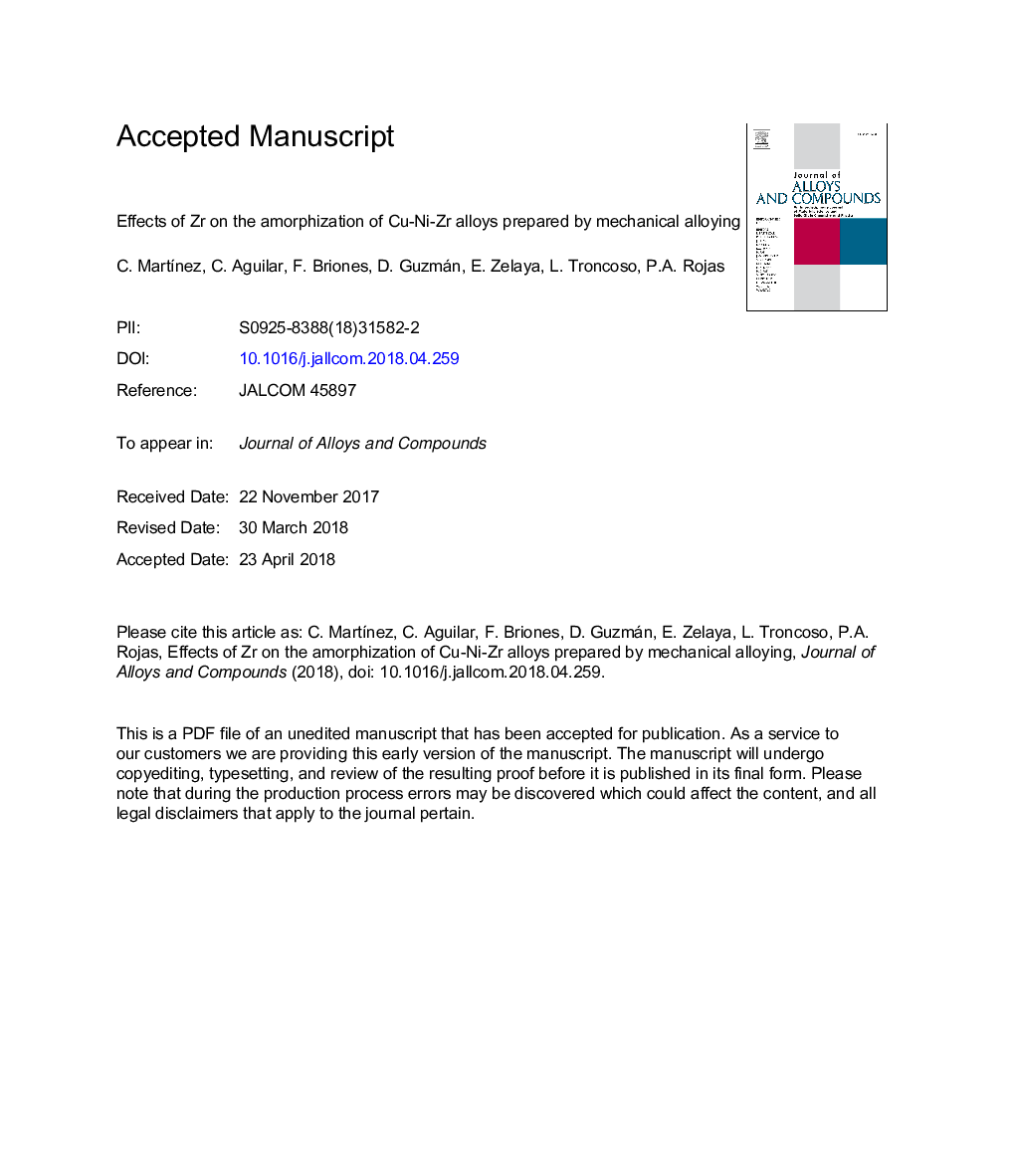| Article ID | Journal | Published Year | Pages | File Type |
|---|---|---|---|---|
| 7990591 | Journal of Alloys and Compounds | 2018 | 38 Pages |
Abstract
This work presents the effects of high energy milling with different Ni and Zr ratios on the amorphization of ternary Cu-Ni-Zr alloys (initially, Cu-43Ni-7Zr, Cu-12Ni-31Zr, Cu-33Ni-7Zr, and Cu-12Ni-23Zr; and later, Cu-23Ni-15Zr and Cu-11Ni-7Zr). Microstructure was determined using X-Ray diffraction and electron microscopy. Results were compared to thermodynamic models. In the ternary alloys under study, the lattice parameter of the Cu-Ni solid solution was generally correlated to the amounts of nickel incorporated into the Cu lattice. However, longer milling times reduced that lattice parameter and facilitated Zr insertion into the solid solution. For example, after 5â¯h of milling time, microstructural analysis showed the formation of a solid solution with cubic structure in Cu-43Ni-7Zr. This pattern is consistent with the presence of a lattice parameter between that of Cu and Ni (αâphase); in contrast, the Cu-33Ni-7Zr alloy showed an α-phase and another similar to Zr. Results suggest that, as the amount of nickel increases, the ability to form an amorphous phase decreases. Additionally, experimental and thermodynamic data showed a solid-solution formation stage, followed by an amorphous phase formation stage that occurred as milling time and Zr content increased.
Keywords
Related Topics
Physical Sciences and Engineering
Materials Science
Metals and Alloys
Authors
C. MartÃnez, C. Aguilar, F. Briones, D. Guzmán, E. Zelaya, L. Troncoso, P.A. Rojas,
